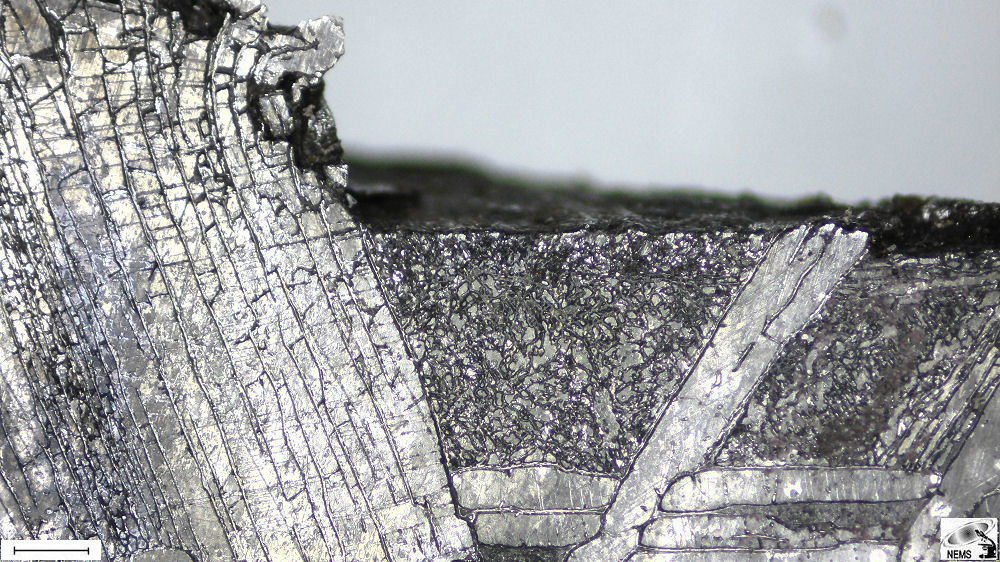|
||
Open mesh Plessite and Kamacite necking |
| Listing of Structures |
| Back...Next |
| Meteorite, Bristol, IVA Iron |

Figure 1. Scale bar 1.0 mm. |
| Meteorite, Bristol, IVA Iron |
| Kamacite lamellae necking, two plessite fields--open mesh and decomposing comb. |
| _____________________________________________________________________________________________________________________________ |
| |
| The term 'necking' in iron
meteorites refers to a distinct phenomenon. It describes the deformation of the metallic matrix, often due to stress or impact, which can lead to the narrowing or 'necking' of the meteorite's structures, similar to how metals deform under tensile stress on Earth. Iron meteorites are primarily composed of the nickel-iron alloys kamacite and taenite. After primary cooling, these meteorites-to-be experienced collisions in space and later high-pressure shock waves during their passage through Earth's atmosphere, causing the metallic structures to deform, twist, or tear apart creating unique structural features within the meteorite. When subjected to a sudden, intense impact, shock waves propagate through the material, generating high pressures and temperatures. These forces play a significant role in the plastic deformation of the iron-alloyed structures in the meteorite, which permanently deforms the material, often without fracturing. The shock waves can cause substantial changes in the microstructure of the meteorite, including the formation of Neuman lines. Kamacite deformation in necked portions of near-surface sections is distinctive for an atmospheric breakup. In contrast, bulk deformations of larger or interior portions argue more for large body breakup, disruption, and the impact event itself. Necking and any deformation or tearing are secondary structures. |
| Listing of Structures |